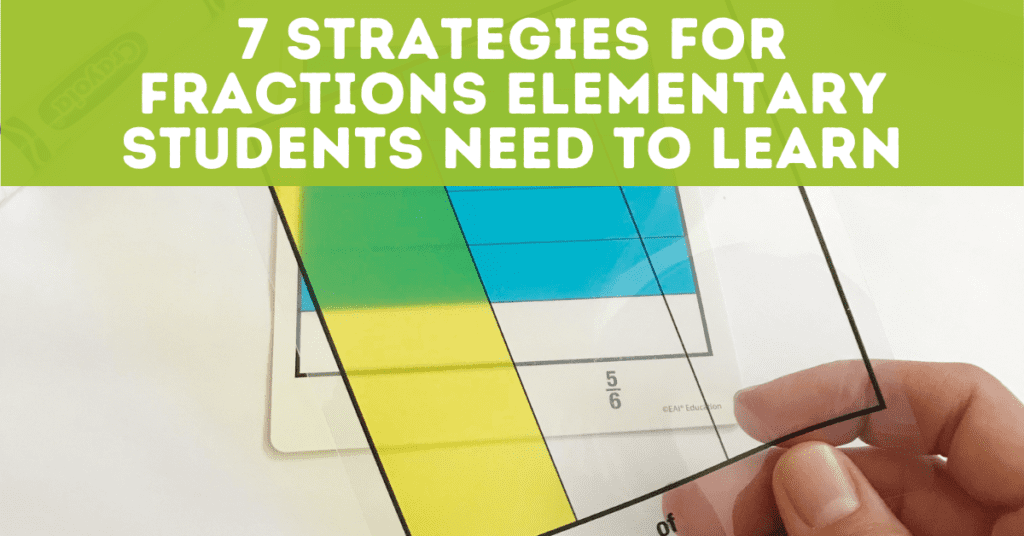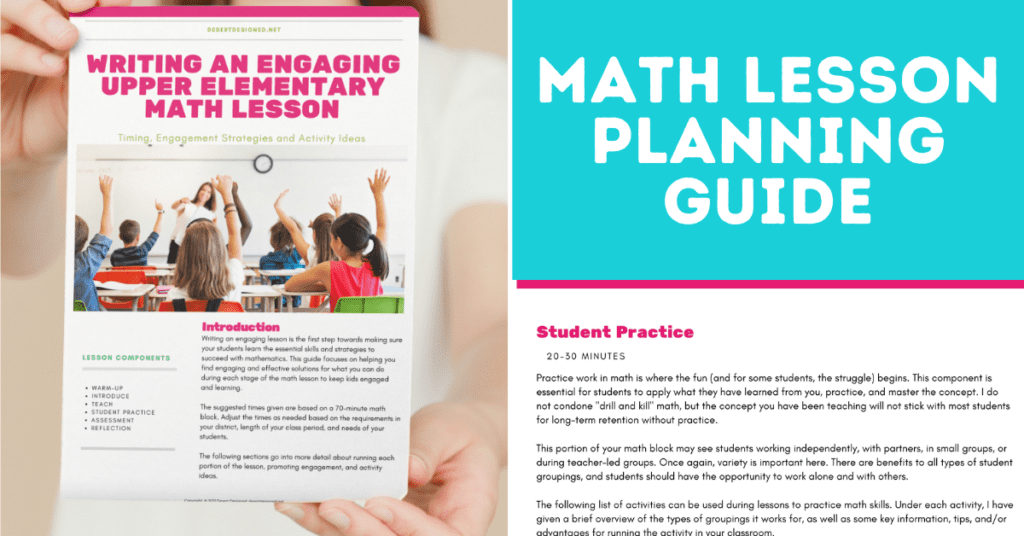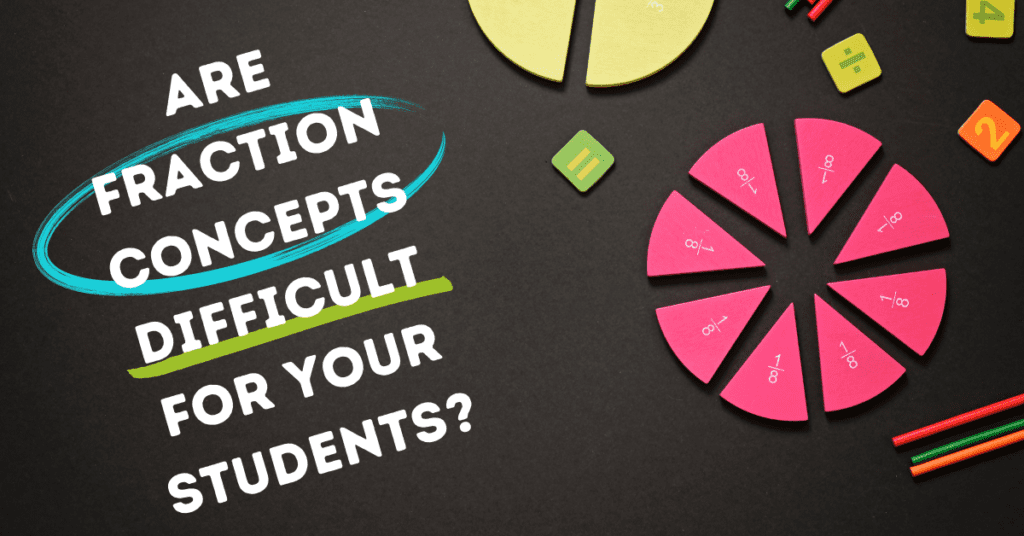
Teaching strategies for fractions in elementary school can seem overwhelming when you don’t know how to use the available tools. Here, I will introduce you to the many strategies you can use in your math lessons while teaching fraction concepts.
To help you plan engaging math lessons, I’ve created a comprehensive guide to making engaging math lessons. Be sure to download your copy of the guide here today!

Overview of Fraction Strategies for Elementary Students
There are many strategies for fractions elementary teachers can use. Students benefit from being introduced to a wide range of strategies when teaching fractions. For students to fully grasp fraction concepts, using various modalities during instruction can make a big difference.
While students are building their fraction concepts and working to understand fraction operations, using faction models can help to solidify their understanding of the concepts.

Types of Fraction Models Overview
There is a range of models to use when working with fractions. Fraction strips, number lines, drawings, and Cuisenaire rods are some of the most common tools. Some other less-used models work well when working with fractions.
Fraction Strips
Fraction strips are sets of plastic or foam strips. Each set includes a variety of denominators and enough strips to equal one whole. Fraction strips are great for:
- Modeling equivalent fractions
- Adding and subtracting fractions with common denominators
- Comparing Fractions
Fractions on a Number Line
Fraction number lines can be printed or drawn by students. Teaching students to make their number lines with fractions is a valuable step towards fraction understanding. The beauty of creating number lines is that you are not limited to pre-printed fraction models with typical denominators. Fraction number lines are great for:
- Modeling equivalent fractions
- Adding and subtracting fractions with common denominators
- Comparing Fractions
- Multiplying and dividing with fractions
Drawing Fraction Models
Drawn fraction models can take a variety of forms. Students can draw various shapes at the introductory level and explore drawing lines to cut those shapes into equal-sized pieces. If students are trying to draw shapes that do not split into equal pieces, one strategy is to cut the shape out with scissors and ask the student to cut it into equal pieces. This will help them see whether the lines they are drawing are creating equal parts.

As students progress to upper elementary, we use circles and creative shapes less frequently and instead focus on rectangular fraction models. By using rectangular fraction models, we can:
- Model equivalent fractions
- Add and subtract fractions with common denominators
- Compare fractions
- Multiply fractions
- Divide unit fractions
Cuisenaire Rods as an Elementary Fractions Strategy
Cuisenaire rods are long rectangular, usually wooden blocks of different sizes. Each block size is a different color. We typically consider the smallest block as 1, with the largest block being 10. However, with the equal proportions presented, these tools can also develop foundational fraction concepts.
Cuisenaire rods are best for:
- Developing a conceptual, less abstract understanding of fractions
- Fraction equivalencies
Semi-Transparent Fraction Models
Semi-transparent fraction model multipliers consist of solid and semi-transparent square fraction models. Students choose a base fraction and then overlay the multiplier fraction. Since the fractions are different colors, when they lay over one another, the answer to the problem is revealed as a different color. I love that these can be quicker than drawing the fractions out for some students, and they are great when working in small groups with struggling learners or as a center activity.
Semi-transparent fraction models are used as a great teaching strategy for:
- Multiplying with fractions
Two-Color Counters
Two-color counters are small discs that are usually red on one side and yellow on the other. These counters are laid out to demonstrate part to whole relationships.
Two-color counters are great for:
- Developing fraction understanding
- Adding or subtracting fractions with common denominators
- Not for modeling fractions but also make great game pieces for classroom games like Bingo and modeling other mathematical concepts
When to Allow Students to Use Modeling Strategies for Fractions in Elementary
Allowing students to use models can be controversial for many teachers, especially those with a more traditional mindset about math. Fraction models should be used as much as possible when developing fraction concepts with students.

Students often struggle when thinking about fractions is because they have not had exposure to models beyond those printed in a textbook or on a worksheet.
Fractions are very real in life. When did you last cook without using fractions? We use them often in measuring or cooking without even thinking about it.
I believe that students should be allowed to used fraction models for as long as they need them.
Moving Away From Models
Students intuitively do not WANT to use models forever. Their novelty wears off, and as students grasp the strategy modeled for fractions in elementary, they will naturally move to use the algorithm as they do their work. This transition especially happens as the problems become more complex, with larger denominators.

Are you looking for more ways to increase engagement with your math lessons? Don’t forget to download your free guide to creating engaging math lessons!







